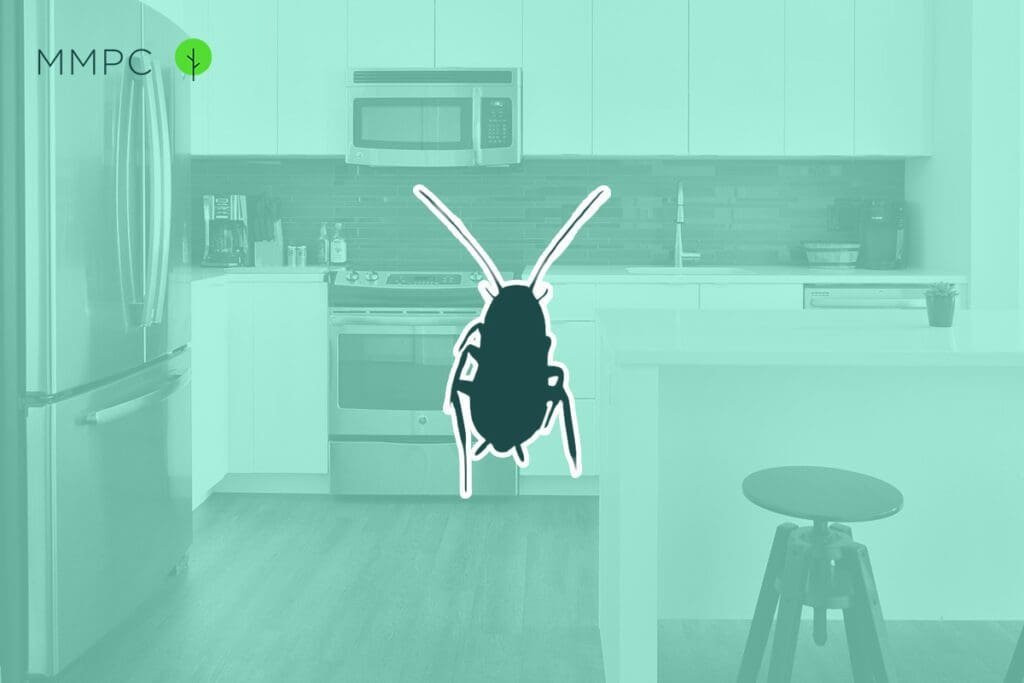Discovering a tiny insect darting across your floor can be unsettling. If you’ve noticed small, dark, oval-shaped bugs in your home, you might be dealing with baby cockroaches, also known as cockroach nymphs. While they may seem less threatening than their adult counterparts, baby roaches are often indicators of a larger infestation nearby.
In this guide, we’ll delve into the world of baby cockroaches, focusing on their appearance and answering the crucial question: Can Baby Roaches Fly? Understanding these pests is the first step in protecting your home and maintaining a pest-free environment.
What Do Baby Roaches Look Like?
Baby cockroaches are essentially miniature versions of adult roaches, though their exact appearance can vary based on their growth stage and species.
 Close-up of baby cockroaches, highlighting their small size and nymph-like appearance
Close-up of baby cockroaches, highlighting their small size and nymph-like appearance
Generally, cockroach nymphs range from 1/8 to 1/4 inches in length and exhibit colors from light brown to dark brown. Newly hatched nymphs often appear white or light grey, darkening within hours. Like adults, they possess flat, hard-shelled bodies. Baby roaches grow through molting, shedding their exoskeletons as they progress through stages called instars. The number of instars varies by species and environment; for example, American cockroaches go through 10 to 13 instar stages before adulthood.
Can Baby Roaches Fly?
No, baby roaches cannot fly. Most cockroach nymphs are wingless. While some species might have underdeveloped wing pads visible on their backs during later instar stages, these wings are non-functional. Cockroaches only develop functional wings in their adult stage, and even then, some species, like German cockroaches, have wings but are unable to fly.
Regardless of species, all baby cockroaches have six spiny legs and two long antennae. In early instars, these features might be small and less noticeable. As nymphs mature, they increasingly resemble miniature adults, with longer legs and antennae nearly as long as their bodies.
Baby Roaches of Different Species: Key Identification Traits
Identifying the species of baby cockroach can help in targeted pest control. Here are characteristics to look for:
Baby American Cockroaches
- Body Shape: Large and oblong.
- Color: Reddish-brown.
- Markings: Distinct halo-shaped marking behind their heads.
- Wings: Wingless nymphs.
Newly hatched American cockroach nymphs are small, about the size of a grain of rice (under 1/4 inch). They grow significantly, reaching around 2 inches as adults. Their color transitions from pale white-grey after hatching to reddish-brown within hours. The reddish-brown hue and halo marking are key identifiers.
Baby German Cockroaches
- Body Shape: Small and oval-shaped.
- Color: Tan or light brown.
- Markings: Two dark, parallel lines on their pronotum (behind the head).
- Wings: Wingless nymphs.
German cockroaches are smaller than American cockroaches. Nymphs start as small as 1/8 inch and reach a maximum adult length of 1/2–2/3 inches. They undergo 6–7 instars, changing from whitish-grey to tan or light brown. The two dark, parallel lines on their pronotum are distinctive.
Baby Oriental Cockroaches
- Body Shape: Large and oblong-shaped.
- Color: Reddish-brown.
- Markings: Bands of light and dark color across their bodies.
- Wings: Wingless nymphs.
Oriental cockroach nymphs start around 1/4 inch long and grow to 1–1.5 inches as adults. They transition from white to pale-brown, then to a reddish-brown as they mature. The horizontal light and dark bands across their backs are the most distinguishing feature.
Baby Cockroaches vs. Bed Bugs: Avoiding Misidentification
Baby roaches are sometimes confused with other pests, especially bed bugs, due to their similar size. Knowing the differences is crucial for effective pest management.
1. Shape
Bed bugs have short, oval bodies, resembling flaxseeds or apple seeds, and are flatter than baby roaches. Baby cockroaches have more cylindrical or oblong bodies, like pellets or rice grains.
2. Antennae
Baby cockroaches have long antennae, almost as long as their bodies, pointing forward. Bed bugs have short antennae that stick out to the sides.
3. Eyes
Bed bugs have noticeable dark, beady eyes protruding from their heads. Baby cockroach eyes are less prominent.
4. Location
Bed bugs are typically found in and around mattresses. Baby roaches are usually near food and water sources, in dark, damp areas.
Frequently Asked Questions About Baby Roaches
How Big Are Baby Cockroaches?
Baby roach size varies by species. German cockroach nymphs start at about 1/8 inch, while American and Oriental nymphs begin at 1/4 inch, roughly the size of a grain of rice.
Can Baby Cockroaches Fly?
To reiterate, no, baby cockroaches cannot fly. They lack functional wings in their nymph stages.
Are Baby Roaches Fast?
Yes, baby roaches are surprisingly fast, almost as quick as adult roaches, reaching speeds comparable to human walking pace.
How Do You Get Rid of Baby Cockroaches?
Seeing baby roaches often signals an infestation. To eliminate them:
- Cleanliness: Remove grease and food crumbs.
- Food Storage: Store food in sealed containers.
- Dishwashing: Wash dishes promptly.
- Fix Leaks: Repair plumbing issues.
- Reduce Clutter: Minimize hiding spots.
- Garbage Management: Regularly empty and clean trash cans.
Insect growth regulators (IGRs) can prevent nymphs from maturing. General cockroach control products like boric acid or diatomaceous earth can also help. For severe infestations, professional pest control services are recommended.
About MMPC
MMPC has provided pest control services for over 25 years in New York City. If you’re dealing with baby roaches, our experts at the Free Pest ID Center can help identify the pest and recommend solutions. Contact us today for assistance.